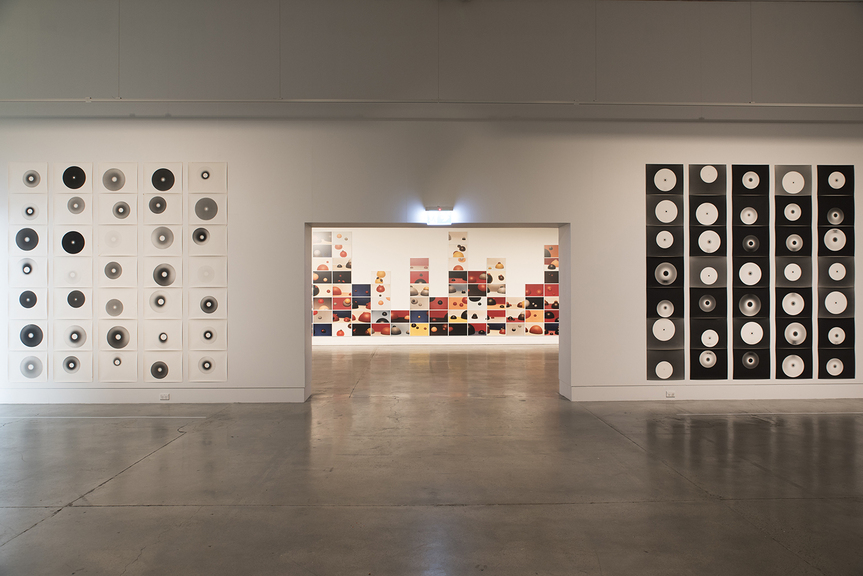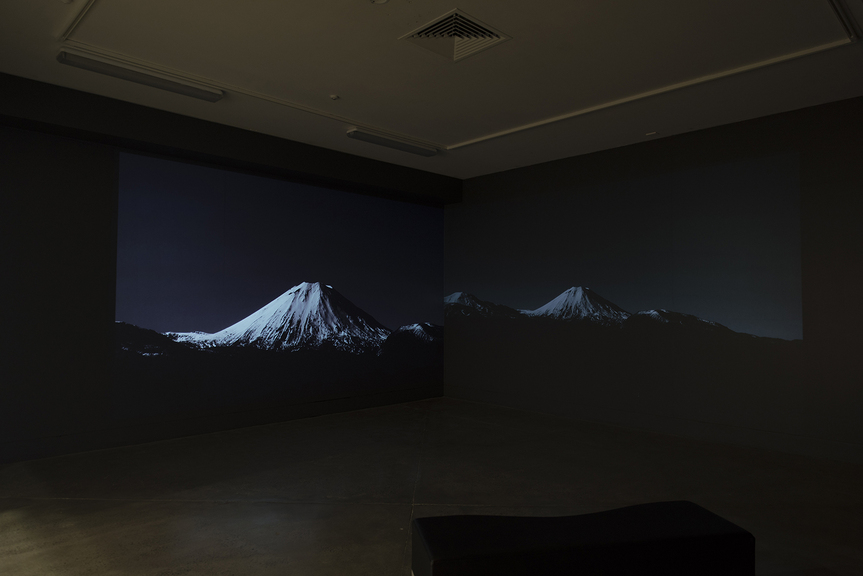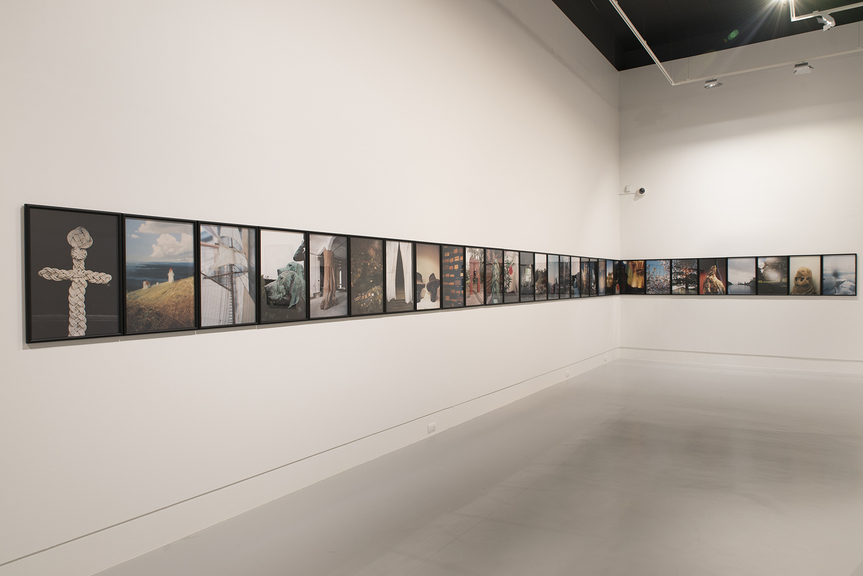-
From Current Issue
-
- Editor’s Letter Fire in the Heart
- Reviews I Gusti Ayu Kadek Murniasih
- Reviews 11th Seoul Mediacity Biennale: “One Escape at a Time”
- Dispatch Networked China
- One on One Monira Al Qadiri on Yukio Mishima
- Essays The rise of independent art spaces in pandemic-era Shanghai
- Features Tuan Andrew Nguyen
- Table of Contents
- Web Exclusives
- Archive
- Subscribe

R
E
V N
E
X
T
Installation view of GAVIN HIPKINS’s “The Domain” at Dowse Art Museum, Lower Hutt, 2017–18. Photo by John Lake. Courtesy the artist and Dowse Art Museum.
Close to drowning, an eight-year-old boy gazed up through the water to see a backlit circle. Cast by an inflated tire inner tube, this shape was indelibly burnt into the child’s mind: perhaps like a silhouette etched into the paper of a photogram. At least, this is one of the explanations given for the prevalence of circular forms in Gavin Hipkins’s survey exhibition “The Domain” at the Dowse Art Museum. The presentation and accompanying publication documents 25 years of the artist’s career from 1992 to 2017.
Resisting a chronological layout, Hipkins’s vast photo-media oeuvre is sensitively corralled into two main groupings, separating his abstract-leaning works from other mostly representational projects. There are some welcome exceptions that soften this thematic conceit, including a few B-side gems that provide conceptual missing links between more well-known bodies of work.
Large grid-hangs predominated the first few galleries solely featuring Hipkins’s aforementioned circular motif. The most captivating is The Field (1994–95), which was installed in a narrow dark space and consists of 1,500 randomly arranged photograms, each featuring impressions of nebulous white circular shapes. A faint glow from an exit sign provides the only light to read the work, and also accentuates its starlike appearance. Created by exposing polystyrene balls to a single light source, this humbly made large-scale work could also be read at a deeper cosmological level—it hints to the curvature and plasticity of space-time, by virtue of being a record of light warped around a spherical form, as photons bend around celestial bodies.
The cosmic malleability of time is more overtly explored in The Port (2014), a video work projected on walls painted dark gray. This presentation emphasizes the ominous imagery and narration that quotes from HG Wells’s novella The Time Machine (1895). The audio plays un-synced over a random sample of video footage shot in numerous locations, including a residential development built in the pit of a quarried volcano in Auckland; and ambiguous solarized images of Jantar Mantars, a collection of 18th-century architectural astronomical instruments built in Jaipur and Delhi.
A portion of Hipkins’s seminal work The Homely (1997–2000) featured in the other half of the exhibition. Consisting of a string of photographs, The Homely depicts the residues of British Empire expansion, romantic sublime landscapes and curios from provincial backwaters. The stream of images is devoid of cohesive narrative but rather evokes, as Peter Brunt rightly describes in the publication, a “melancholy for the lost other.” Again, random sampling comes to the fore. Chance has an important presence in Hipkins’s creative process as a formalist compositional device and as a conceptual driver for questioning the authority of singular perspectives and characterizing nature as a chaotic force.
The accompanying publication examines these meta-layers of Hipkins’s practice in further detail, especially in the introductory essay by Dowse director and exhibition curator Courtney Johnston. Other highlights include a selection of republished essays—those by Peter Brunt, William McAloon and Laurence Simmons are particularly good. In some instances, the book adds what the show lacked, such as Hipkins’s feature film Erehwon (2014), which was sadly missing from the exhibition, but a nuanced essay by Simmons on the work goes some way to compensate for this.
Both the exhibition and publication comprehensively chart Hipkins’s almost encyclopedic dissection of the photographic medium to mine its technological and ideological legacy. This said, there must be more to his practice than an exhaustive intellectual exercise. The subtle mention of his childhood experience in Johnston’s essay is interesting to note in this respect. Perhaps it is the scarcely mentioned personal influences that enables Hipkins to create such compelling works that touch on complexities that are deeply felt but difficult to explain.
Gavin Hipkins’s “The Domain” is on view at Dowse Art Museum, Lower Hutt, until March 25, 2018.
To read more of ArtAsiaPacific’s articles, visit our Digital Library.






